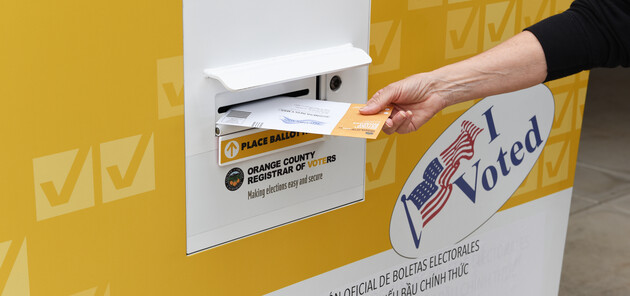Millions of Ukrainian men and women had lived overseas before 2022 but because of the full-scale war, their numbers have largely grown. Not all of them will manage to return to participate in elections. As of now, Ukraine does not have enough polling stations out of country to enable access to the vote to all.
Civil Network OPORA that has been monitoring elections since 2007 is searching for alternative ways for voting that could work for Ukraine. one such solution could be voting by mail, when a person receives a ballot by mail, to be filled and sent back. Presently, this practice is used in 18 countries.
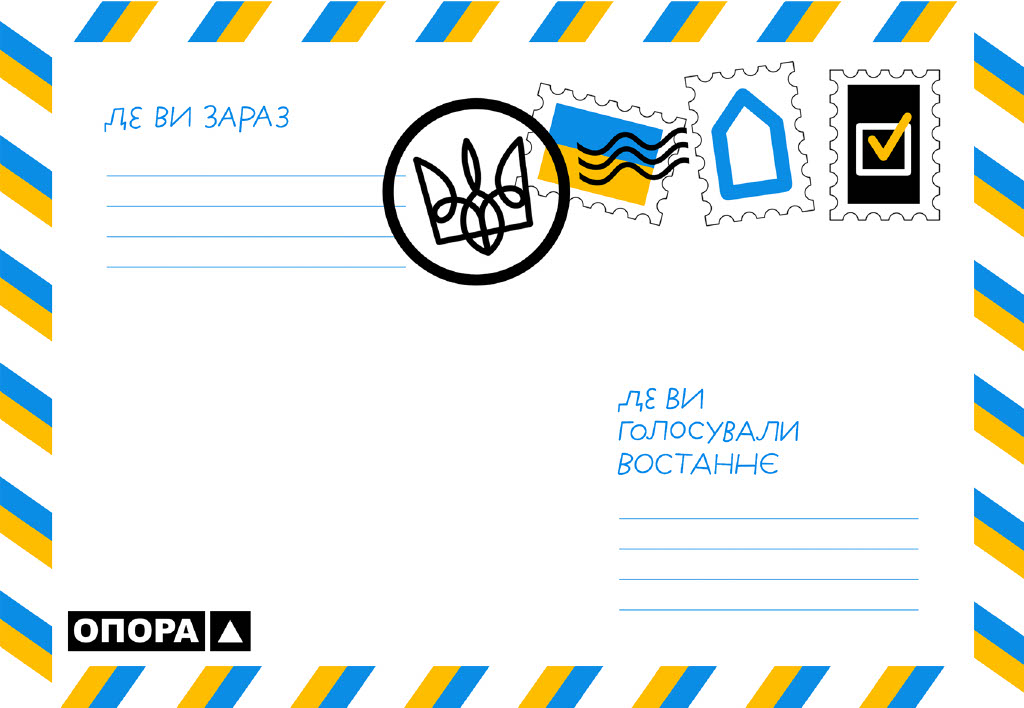
To explore whether the format of voting would work for Ukraine, OPORA launches an experiment you can join at the link.
Where Does the Voting by Mail Come From
Let us take a look at a painting by a US artist George Caleb Bingham who depicted an oral vote taking place in Missouri in 1846. You can hear the story of this painting in a lecture about US elections. A large group of citizens came together to give their vote in elections. Politicians are trying to campaign and are nervously pushing their leaflets to certain people. One citizen, an Irish immigrant, promises he had not voted elsewhere yet, while the veteran of the 1776 revolutionary war is going downstairs. Two polling station workers are writing down the announced votes. One drunk citizen who can hardly stand up was dragged in to vote. Another one is sitting there with a glass where some alcohol may be poured for his “proper” voting.
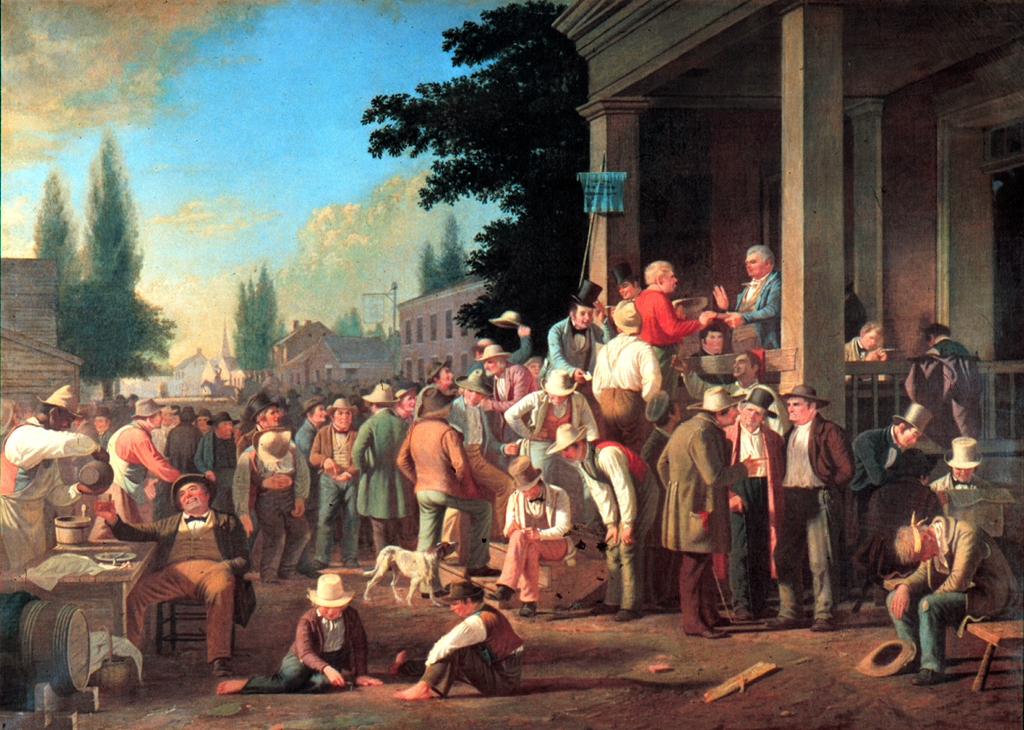
Remote voting by mail grew from the oral expression of will that had its flaws and challenges. In Massachusetts, in the 17th (!) century, men could vote from home if their homesteads were “vulnerable to attacks from Indians.” During the US Revolution of 1775, votes of some soldiers in the Continental Army were presented in the written form “as if they were personally present” in Hollis (New Hampshire).
Voter mobility means their ability to freely move within their country and still enjoy the possibility to exercise their suffrage. In the US, voter mobility is a critical factor during elections, as people can move to a new address before the voting day.
It was during the Civil War that the US first experimented with the absentee voting on a large scale. During the 1864 presidential elections, won by the Republican incumbent President Abraham Lincoln, the Union soldiers voted in camps and field hospitals, under the supervision of clerks or state officials.
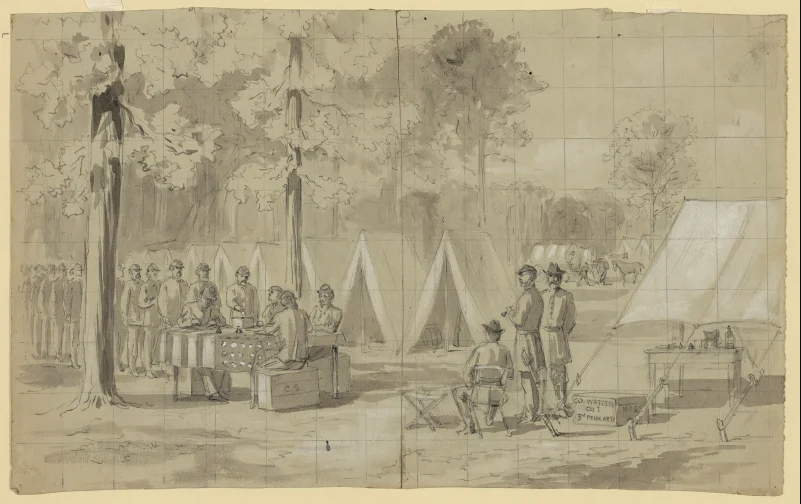
Governments of belligerent powers in Europe during the First and he Second World Wars also searched for solutions to have their soldiers vote. The main method of remote voting was to send the ballots by mail to the counting stations or to their polling stations.
Present-day/standard mechanism of voting by mail
Usually, in order to vote by mail, a voter shall notify in advance the election commission or authorities, or get registered out of country and leave their mailing address. In that case, before the election day, a person will receive an envelope in the mail, with a ballot and two envelops. By marking the ballot, a voter will put it in unsigned envelop, seal it, and place inside another envelop, with the sender’s address. The double envelope ensures anonymity: during the count, they will take out the unidentified envelops, stack them, and then open.
A voter will have to decide about a party or a candidate and send the letter before a set date, to make sure the letter reaches the election commission before the vote count. Opening the anonymous envelops and the count of the ballots is the final stage, which is not much different from the regular vote count at a polling station.
First issues
In Australia, the prototype of voting by mail was introduced in the 1890s, for sailors; for persons who would stay further than 15 miles away from their homes; for women who could not come to the polling station for health reasons.

You had to vote at a post office. Of course, candidates started raising the issue of “political organization” that assembled postmen to impact the voting outcomes, to help certain candidates and to affect others. Later, in 1907, there were cases when many voters asked to send in their ballots to the same address.
In 1946, in some constituencies, voters who had voted by mail previously, were automatically included into the same category, and then party staff were visiting their homes and offering those voters to help fill and send their ballots. One can be suspicious that ballots filled for another party could have been “lost” on the way. Besides, when voters used pencils to mark the ballots, they could be easily changed.
The effect of voting by mail
One theory says that this voting method could yield certain benefits to some electoral actors, if their electorate were entitled to vote by mail. For example, elections in Australia in the 1970s: one of the parties was mostly supported by elderly people, and voting by mail ensured more seats in the parliament for the party. However, it is a rather unique case.
Researchers from Democracy and Polarization Lab at Stanford University analyzed the data for 1996–2018 in three states with the universal voting by mail (California, Utah, and Washington). As a result, they have not found any benefits for voting by mail for any specific political party. This finding also offsets President Trump’s opinion claiming that Republicans would never again win the elections if voting by mail gets widespread. The scientists only found a “moderate increase in the total average turnout.”
There is a common reasoning in favour of distance voting (such as by mail): that it allegedly increases the turnout of voters. In the USA, as a country with the longest experience of voting by mail, various studies were conducted in the 2000s, and the hypothesis was refuted.
Cases of scheming with ballots sent by mail are documented rarely. However, researchers say that attempts of faking the voting by mail occur more often than voting in person at the polling station.
Two best known cases of faking the vote with the absentee voting were recorded in the US in 1997. It was in Georgia (voter bribery, especially those who voted other than at the polling station, at 20 to 60 dollars), and in Miami (36 people were accused of false testimony when signing the ballots). Moreover, recently, a campaign manager in North Carolina cheated on voters to collect the empty ballots, and then filled them in favour of his candidate. He was discovered, and new elections were scheduled.
However, we need to remember that it is the USA, a country where you will be brought to justice for breaking the law, which means there are few violations in general. In Ukraine, electoral fraud may well go unpunished, that is why the threats due to electoral fraud shall be taken seriously.
When you can vote only by mail
In 1998, the US state of Oregon conducted a referendum and issued all ballots by mail only. The Washington state followed the model in 2011, Colorado — in 2013, Hawaii and Utah — since 2020. California, District of Columbia, Nevada, New Jersey, and Vermont sent out the ballots to all voters in 2020, to protect them from the coronavirus disease threat. Montana allowed the districts to decide whether to send the ballots by mail to all registered voters.
However, in those cases, voters return them mostly to special vote collecting boxes. According to statistics from 2020, 91% of voters in Colorado, 71% in Oregon, and 70% in Washington returned their ballots to a certain physical location, such as to the vote collecting box, or to local election commissions. Therefore, it is rather about “sending the ballots by mail” rather than about the voting by mail.
Present-day manipulations
A reasoning against the mail voting claims that people vote too fast. They say that voters fill in the ballots when the election campaign is not over yet, which implies they have no complete updates needed for the well-informed choice. On the other hand, it also means that voters who vote by mail in advance are less affected by the compromising evidence that election participants keep to the campaigns’ last days in order to “drown” their competitors. Researchers found that the most ardent supporters tend to vote the first. Thus, the information received in the last days of the campaign will least likely affect their choice.
However, the mail voting results can be influenced. Ballots may get “lost”, stolen, or faked after they are sent for the count. These risks can be mitigated by strict procedures of processing mail ballots, such as the identification of voters, verification of the ballot, and the reliable storage and transportation of the ballots.
The results of mail voting were attempted to be faked during the 2019 presidential elections in Indonesia. At that time, in the neighbouring Malaysia, where over one million of Indonesian citizens live, about 50,000 envelops with ballots were found, checked for the incumbent President Joko Widodo. A video was also posted where people open the envelops, get the ballots, put a mark next to their candidate, and seal the envelops again. It was hard to find the offenders because the crime took place on the territory of another state. Faking Indonesian ballots is not a crime in Malaysia, and Indonesian police cannot investigate the crime on another country’s territory without their authorization. To cut the long story short, these elections faced some issues with the vote count.
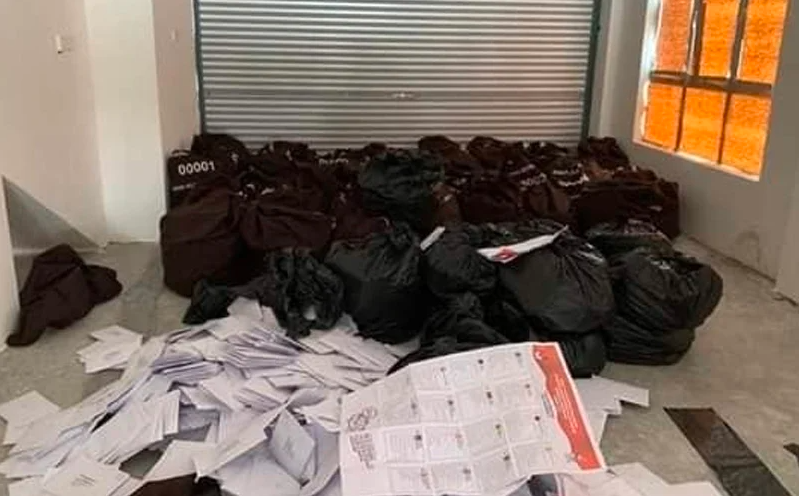
Presently, millions of Ukrainian people live abroad. If anyone tris to fake the mail voting in any of those countries during Ukrainian elections, the investigation will come as a nightmare for our law-enforcement. It may take years. We had a similar case at the 2015 elections in Chernivtsi, where the investigation took longer than the office in the city council of that councilor committing the crime.
Voting by mail is a new method of expressing the will for Ukraine. Violations during elections are rather common in our country, and the introduction of a new method of voting may lead to higher numbers of abuse. It is a challenge for non-partisan and party-affiliated observers who will have to adjust their technologies of protecting elections, and also for the law-enforcement and anyone engaged in the organization of elections. It will also be important to explain to voters how to vote by mail. To find out whether this solution would work for Ukraine, join the mail voting experiment by OPORA.
Iurii Lisovskyj, expert of the Civil Network OPORA on election issue, specifically for ZN.UA
